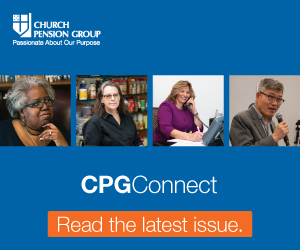by Dorothy Wells
The tears that emerged on that Sunday morning caught me off-guard.
I had noticed the young family as we all entered the Equal Justice Initiative’s Legacy Museum, in Montgomery, Alabama: mom, dad, a daughter of about age 12, and a son, of about age 9. We entered the Museum’s short opening film together, the film being a highly sensory experience that draws us into an ocean’s tide and asks us to imagine the Transatlantic voyage made by persons who were being brought to “market” in the Americas.
I was returning for a second day – part of a long-overdue pilgrimage to the Museum, the National Peace and Justice Memorial, and along Montgomery’s Civil Rights Trail. It was a pilgrimage I needed – in part, for a book I’m writing, and in part because Alabama is my home state – and trips to Montgomery to visit relatives when I was a child were frequent.
The Museum is hard: The ocean waves that first greet entering visitors show no land in sight, offering some idea of the fear experienced by more than 12 million persons who rode in shackles across the Middle Passage, two million losing their lives to sickness and disease along the way. Through narration, short films, text, graphics and art, the Museum traces the history of black persons here in the United States from the arrival of enslaved persons at Jamestown in 1619 through the story of slavery, separation, segregation and injustice on this soil.
The museum is important – and a great place for us all to focus on perspectives that aren’t always taught in history books.
Captivated for a second time by the Museum’s powerful opening, I glanced at the young family, and wondered what the children were thinking. During moments of the opening film, their mother had wrapped her arms around each of them, speaking softly to them as they took in the emotional scene.
As we moved about that opening exhibit, I found myself standing close to the mother. I could have continued on, but something stopped me. I leaned over, and spoke quietly to her: “Thank you for bringing your children here today. Thank you.”
I was fighting back tears, but quickly surrendered to them as I looked at the two children. The mother, too, began to cry, and both of us, now sobbing, embraced in a hug. In the midst of a museum which occupies the site of a “warehouse” where enslaved persons were kept before their sale, we cried – two mothers, separated by skin color, two mothers both wanting the best for our children. “I hope your children don’t leave here today feeling guilty,” I said, “but understanding the economic reality of slavery, and that its effects are still being felt in the world even today. There’s still so much to do.” She nodded, and said “thank you” through her tears.
The moment had truly caught me off-guard. But, indeed, we were two mothers – one whose children are younger, one whose children have reached adulthood, one white, one black – but whose families are connected – as all of the human family is connected. My young adult daughters are counting on that mother’s children to be committed to the well-being of all humanity; her daughter and son are counting on the same from my daughters.
That evening, as I reflected on that moment, I thought of biblical mothers who had come before us.
I thought of Sarah and Hagar – two mothers whose lives were connected as Sarah struggled through infertility and chose to offer Hagar to her husband, Abraham, so that he might indeed have an heir. I thought of the ways that jealousy and bitterness separated –and endangered – their family.
I thought of Leah and Rachel – two mothers both bearing sons for Jacob – and the insecurities older sister Leah surely felt knowing that no matter how many sons she bore for Jacob, it was really her younger sister, Rachel, whom Jacob loved. All of their children would grow up together – and the very insecurities that Leah surely felt lived on in her sons, who would jealously seek to eliminate Rachel’s firstborn son, Joseph, from the family equation.
I thought of Naomi and Ruth – two mothers who knew heartbreak and fear, and later the tremendous gift of a son born to Ruth who filled both her life and her mother-in-law’s life with unexpected joy.
I thought of Elizabeth and Mary – two mothers in the first century world of the Roman Empire who needed to keep their sons alive even through Herod’s murderous rampage to kill all children in and around the Judean town of Bethlehem, to eliminate the threat of the infant king sought by the wise men.
And, I wondered what would happen if two mothers who connected on an unexpected day, in an unexpected place, with unexpected tears, unleashed all of the power of love within them to make the world better.
Perhaps that moment came, without any warning, on a hot summer day, in the Equal Justice Initiative’s Legacy Museum, in Montgomery, Alabama…


